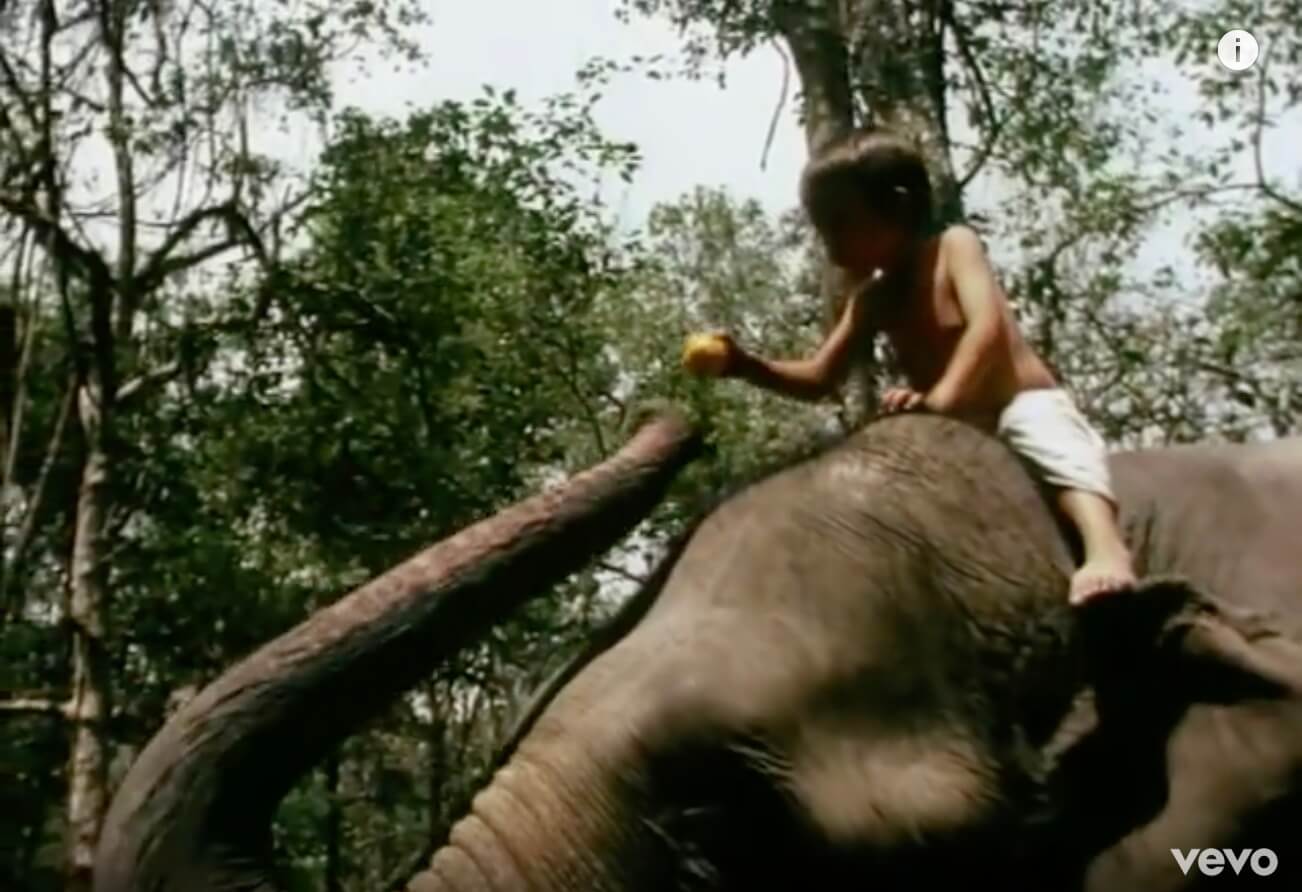The Eyes of Truth




The blue sky was clear and early afternoon sunlight bounced off the glaciers, gullies and rock walls of the Langtang peaks, but the helicopter captain was keen to leave. He was concerned about the effects of altitude after several hours filming in the high meadow above Kyangjin Gompa. I could see the Hollywood team were groggy, hauling heavy camera equipment in the thin Himalayan air, and I was beginning to feel lightheaded myself.
Director Julien Temple called to us from across the hill: “Let’s just try one more time with the flute players and local kids, but without the yaks and ponies.” Laxman had a headache and his back hurt from carrying Rinchen - the young star - up and down the ridge on his shoulders, simulating the swaying movements of an elephant against the mountain backdrop.
Dazed with fatigue and breathless, the film crew once more realigned their gear, the local extras were ushered into position, silver reflectors were repositioned, the clap-board snapped action, Rinchen set off regal on his fake elephant, and the cameras rolled for the last time that day.
I looked around as we quickly stowed the paraphernalia, thanked Thiley Lama, our Langtang fixer, and his friends, waved to the yak handlers and horsemen, and piled back into the big Russian chopper. We took off slowly, the rotors roaring and prayer flags flailing, as the squat stone monastery and small cluster of flat-roofed houses receded beneath us, dwarfed by the rampart of towering white peaks protecting the Langtang Valley. Soaring south, it took only a few minutes skimming above the hilltops back home to Kathmandu, but it seemed like another world.

It was spring 1994 and we were filming one of Asia’s first music videos – the MTV generation was still in its infancy. The Eyes of Truth, a track from Enigma’s Cross of Changesalbum, is a haunting electronic melody of buzzing bees, rhythmic chanting and wailing Mongolian shepherdesses. Julien Temple was amongs the first to pioneer the music video genre, his boyish looks belying a background with giants including David Bowie, The Rolling Stones and Sex Pistols.
Read also: Sun striped shadows, Lisa Choegyal
The Cantankerous Conservationist, Lisa Choegyal
Inspired by Buddhist iconography and the Valley stupas’ all-seeing eyes, Temple and his wife Amanda had written a prescient mini-saga about an abandoned boy brought up by elephants, then driven into an unknown world by environmental destruction, where he would be hailed prince of truth, before retreating back into the jungle with his pachyderm dependents. “The Eyes of Truth are always watching you.” They asked me to arrange the film permit and logistics, as complex as any full-length feature, and to find the main character – a spiritual young boy with a generic Asian-Western look who was comfortable around elephants. That was easy. Both my sons Sangjay and Rinchen were at the British School in Kathmandu, and Malcolm McDougal was also put forward as a candidate – all boys blessed with an upbringing amongst the Tiger Tops elephant camps in Chitwan and Bardia. Four-year-old Rinchen, whose acclaimed Cowardly Lion in the kindergarten Wizard of Oz production had sparked acting aspirations, was thrilled to be selected. What could be better than to take two weeks off school, hang out with elephants, and be paid for it?

The pristine air quality and unbuilt vistas of Kathmandu Valley of the early 1990s enabled us to select locations and deliver The Eyes of Truth storyboard as originally envisaged in Julien and Amanda’s script. Our film support team, fresh from months working on Little Buddha, swung into action. For the ten-day shoot, hundreds of skilled Newari artistes, Nepali musicians and Valley villagers were dressed and rehearsed, domestic elephants from Chitwan and Kathmandu were booked and briefed, and Rinchen’s costumes and jewelled headdresses were designed and prepared.
“I hope they can’t see up my sarong.” Little Rinchen clambered up Sita Kali’s trunk, hanging onto her patient elephant ears. My favourite moment follows the honey hunter opening sequence, when the camera finds Rinchen, angelically asleep amidst falling leaves, lying on Sita Kali’s massive body, resting supine on the forest floor. Thankfully her mahout driver and my boys’ favourite jungle friend, Kale, was never far away off screen, controlling her with quiet voice commands. A pretty wife and baby from the Tiger Tops elephant camp were engaged for the Moses scene, during which the child is rescued from his floating cradle by kind elephant carers – the buoyancy of the woven basket caused us lots of problems.

Read also: The Kathmandu Crowd, Lisa Choegyal
Past Everest Anniversaries, Lisa Choegyal
At Bodnath, where Rinchen was filmed, enthroned on his zoo elephant dressed in silk and gold, pilgrims prostrated and made offerings, mistaking him for a real Rinpoche. Bungamati villagers showered him with flower petals thrown from their upper windows, echoing a scene with Keanu Reeves in Little Buddha. At Bhaktapur, the clashing cymbals, drums and dancers brought the Darbar Square to a standstill, and a lovely sequence beside the river chaityasat Gokarna Mahadev was left on the cutting room floor.
On the last day of 4AM starts with loyal Laxman in attendance. After long hours of make-up, and hours as the centre of attention with his crew of new admirers, Rinchen descended reluctantly from his elephant and, looking around for Julien, asked: “And now, where’s my money?”
Not only did The Eyes of Truth music video top the Asian charts for weeks, the poignant tune, familiar even today, became a Youtube sensation viewed by millions. We have used it at countless travel conferences and trade shows as a subtle sell to promote the variety and scenic splendour of Nepal – its succinct five-minute span perfectly captures the essence of Nepal’s natural, cultural and adventure appeal.

writer




